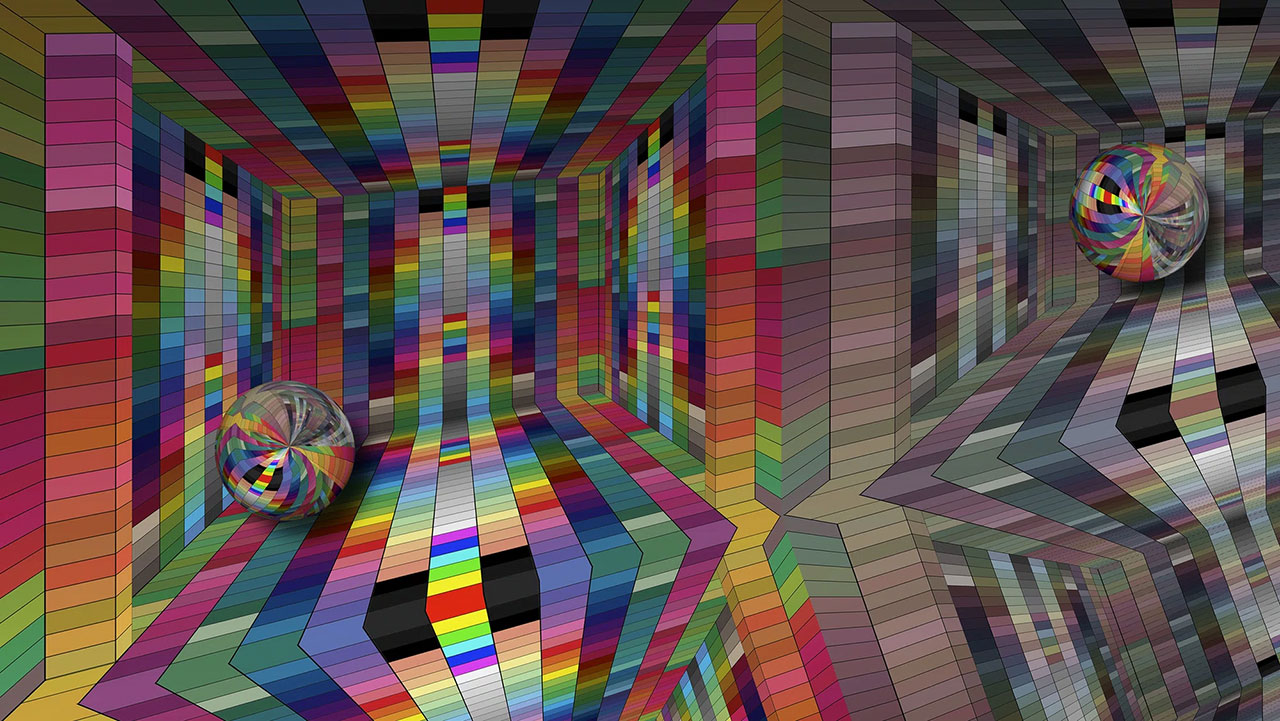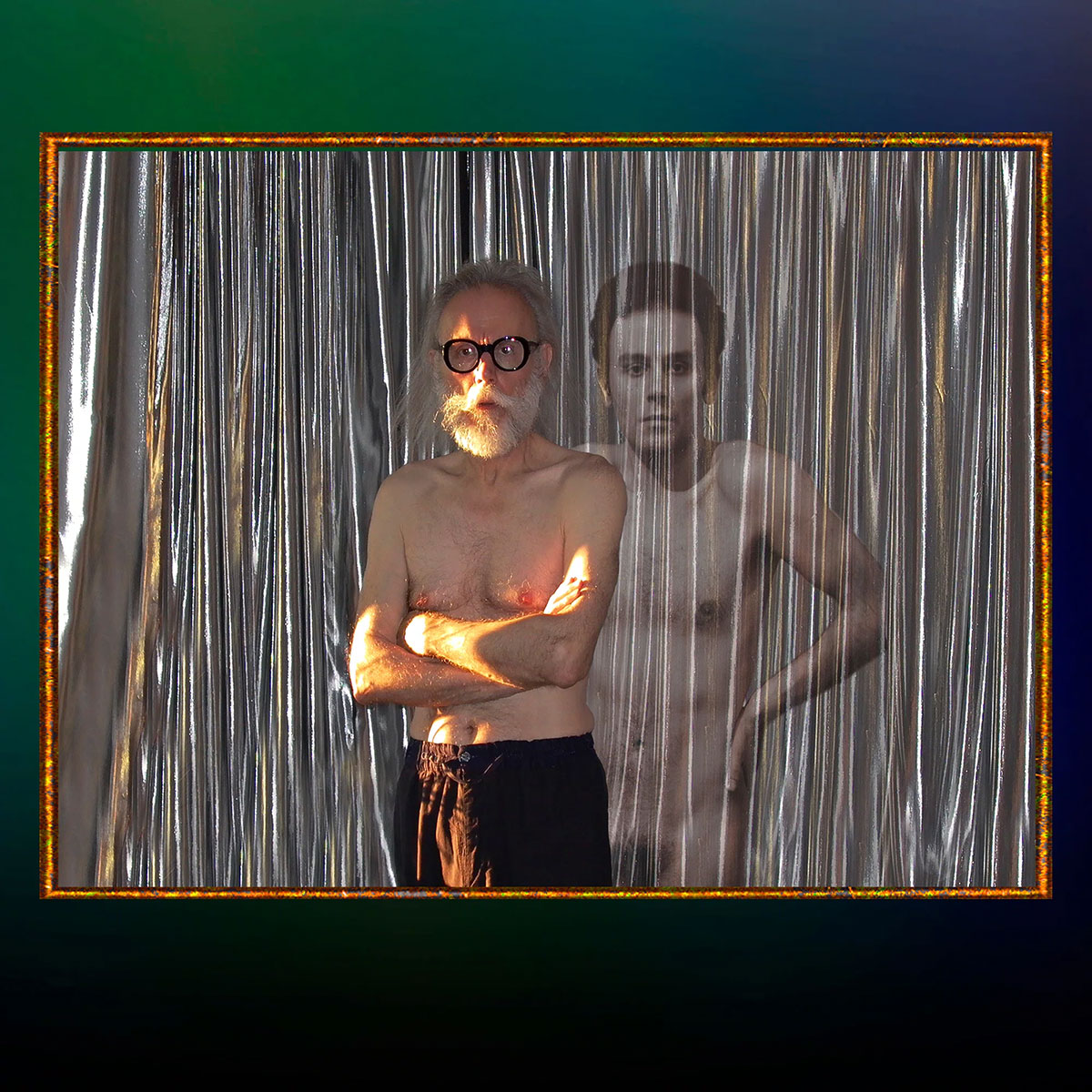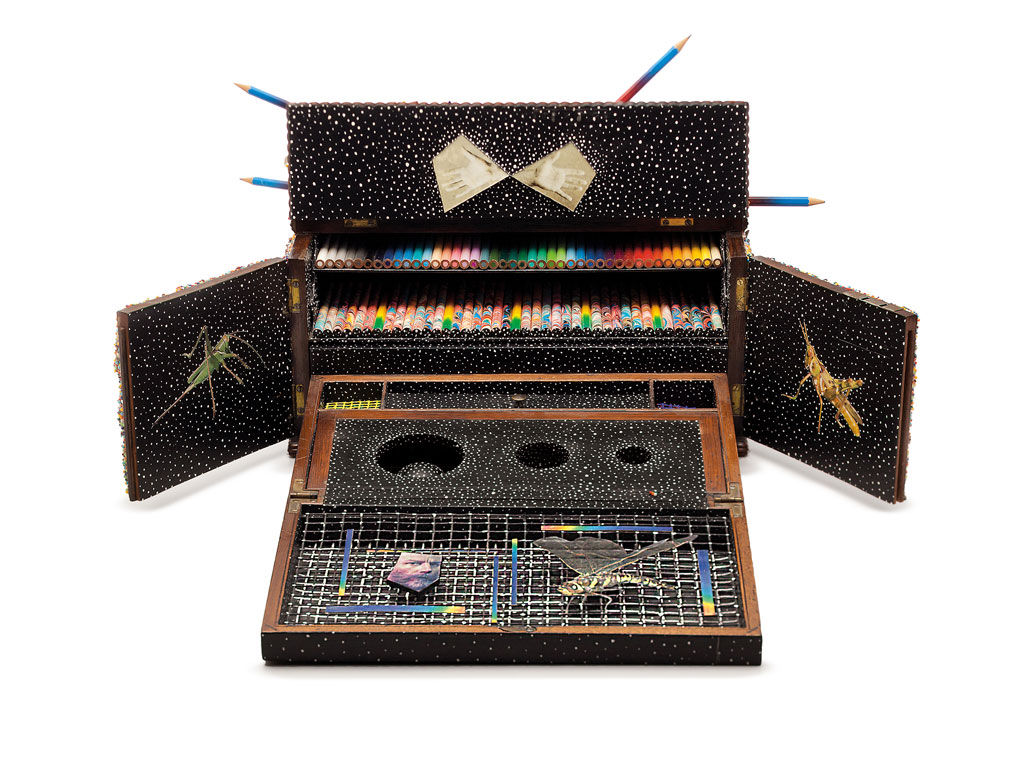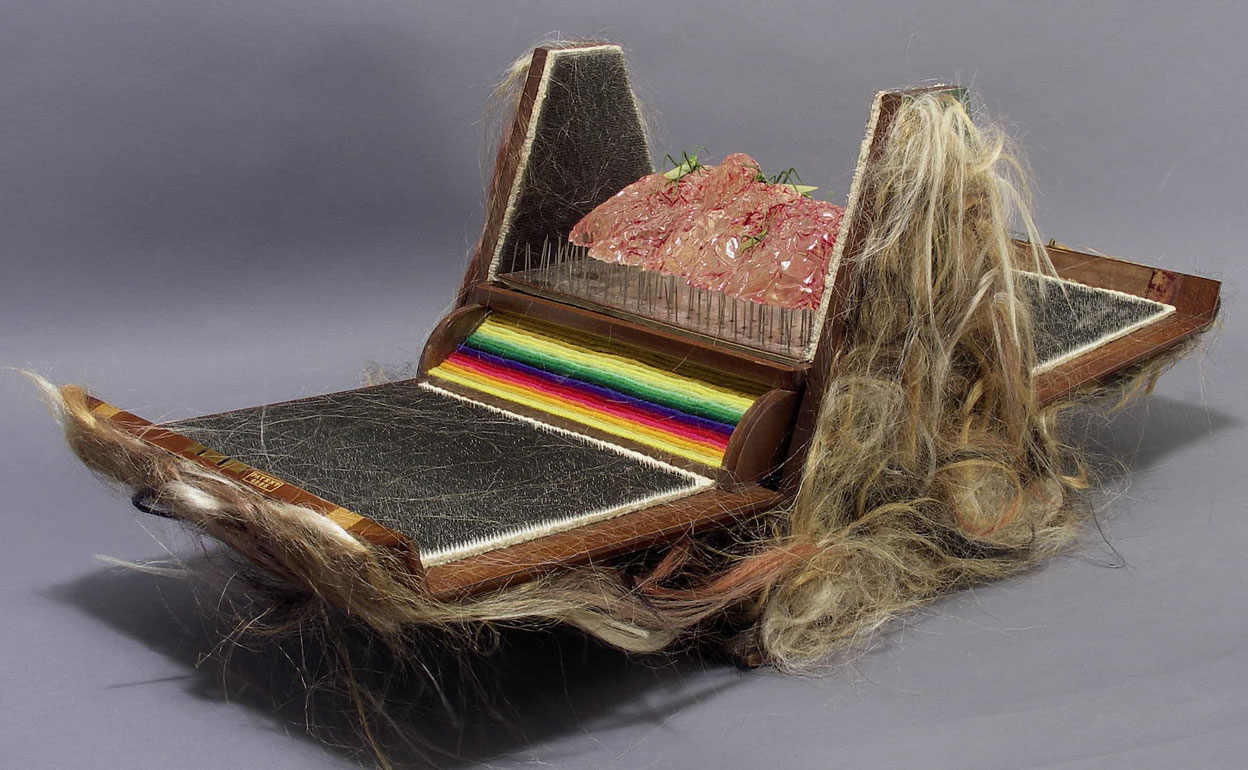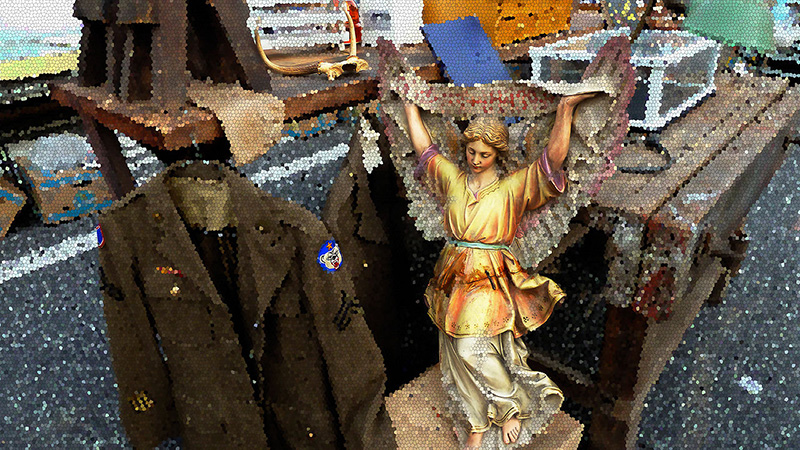TRACES: Lucas Samaras
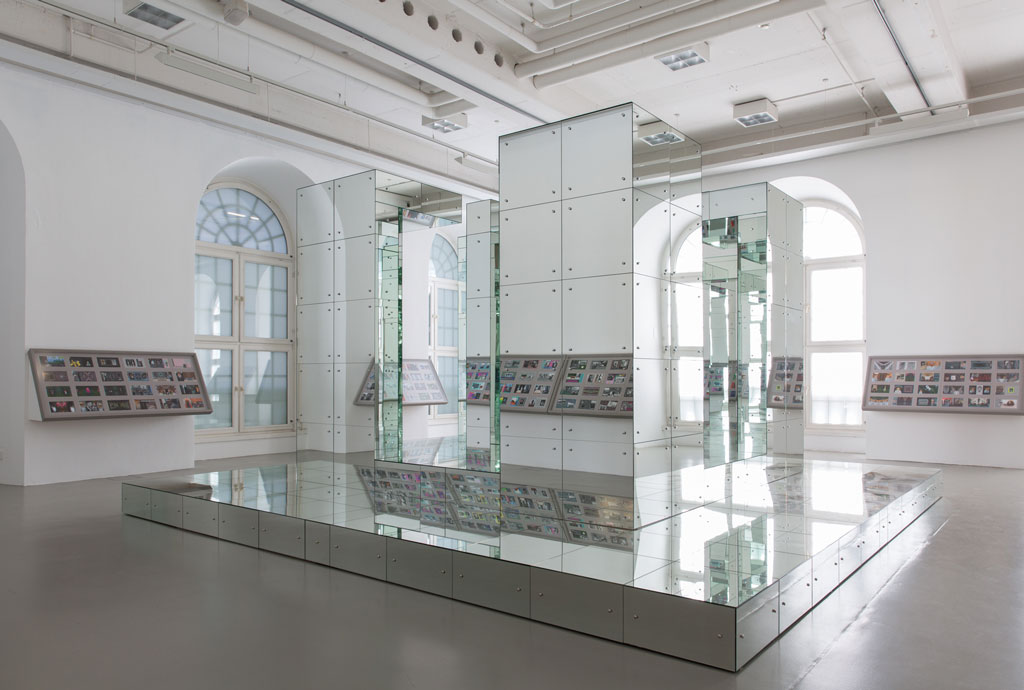 Today is the occasion to bear in mind Lucas Samaras (14/9/1936-7/3/2024). Lucas Samaras is not the best-known artist in America, but among the experts he is considered a wizard, and among artists he’s an elusive legend, a loner, eccentric, master of unusual media, and visionary who has avoided classification. He’s a solitary worker who has remained outside of movements, trends, or cliques, making work that is always original, provocative, and surprising. Through documents or interviews, starting with: moments and memories, we reveal out from the past-unknown sides of big personalities, who left their indelible traces in time and history…
Today is the occasion to bear in mind Lucas Samaras (14/9/1936-7/3/2024). Lucas Samaras is not the best-known artist in America, but among the experts he is considered a wizard, and among artists he’s an elusive legend, a loner, eccentric, master of unusual media, and visionary who has avoided classification. He’s a solitary worker who has remained outside of movements, trends, or cliques, making work that is always original, provocative, and surprising. Through documents or interviews, starting with: moments and memories, we reveal out from the past-unknown sides of big personalities, who left their indelible traces in time and history…
By Efi Michalarou
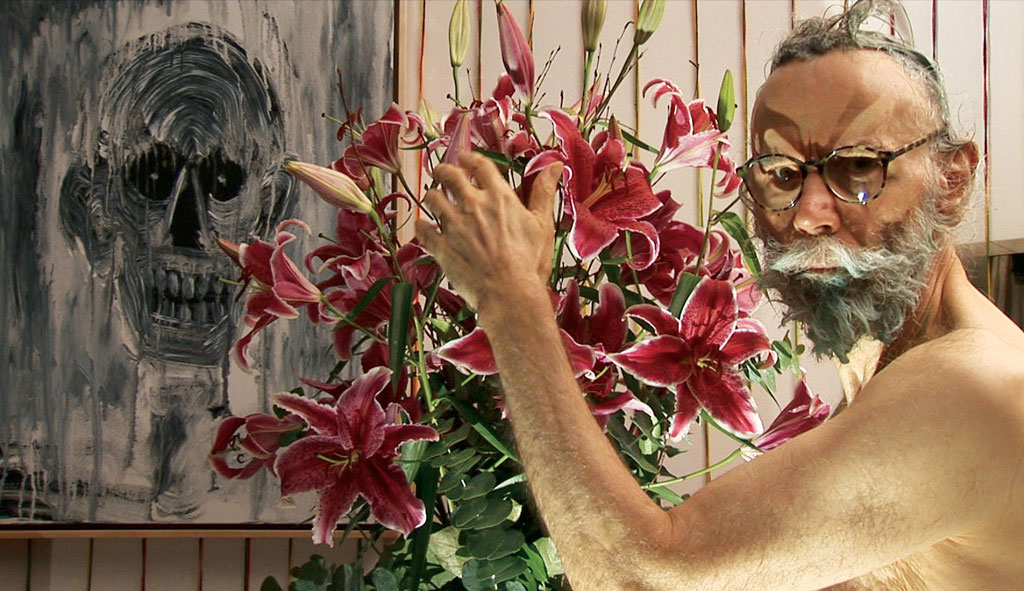 Born in 1936 in Greece, Samaras grew up amidst the traumas of World War II and the Greek Civil War. He moved to the United States as an adolescent, settling first in New Jersey before moving to New York City. He was a key participant in many of the early “Happenings” staged by Claes Oldenburg, Allan Kaprow, and Jim Dine. He was among the first artists to exploit the Polaroid photograph when it was introduced. Moreover, he is a skilled draftsman, painter, sculptor, filmmaker, and, most recently, a creator of brilliantly colored, phantasmagoric photographs that he has manipulated digitally. Samaras studied at New York’s Stella Adler Conservatory for Acting in the late ‘50s. Although he never became a professional actor, the black-and-white head shot he had taken for promotional purposes became fodder for his art. For a 1963 self-portrait, using one of his favorite implements, he impaled his visage in the head shot with the exception of his eyes with hundreds of pins. Between 1962 and 1989, Samaras made 135 highly complex box constructions. One early example, “Box #10” (1963), is covered with pins, tiny springs, and colored yarn. Characteristic of his box constructions, “Box #10” opens to reveal fantastic, sparkling objects in its many hidden compartments, additionally, when the tiny button on the underside of the lid is pulled, the familiar head shot is revealed—this time framed by rainbows of yarn. In 1966, Lucas Samaras’ ground-breaking “Room No. 2” (popularly known as Mirrored Room) was unveiled. It was one of the earliest installation artworks that encouraged viewers to enter and experience rather than passively view. The artist is well-known for imaginatively exploiting the medium of the Polaroid. When Samaras was given an SX-70 camera by Polaroid in 1973, he said it was “One of the greatest gifts anyone could give an artist”. “Photo-Transformation” (1973) is one of his early so-called “Photo-Transformations”, each of which is a self-portrait in some way. Anticipating Photoshop by some 15 years, the artist is seen with his fist before his face in a haunting image created entirely by hand-manipulating the emulsions of the photo surface before it dries. In the 1980s Samaras made a series called “Panoramas”, again using Polaroid film but to very different effect, as he pieced together slices of many photographs to create an 2 meters view of his home, his tiny kitchen and his study filled with the ingredients of his life and implements of his art. Samaras is known for a series of “Auto-Interviews”, in which he interrogates himself, but for Interview this notorious loner spoke to his longtime friend and dealer Arne Glimcher, who may be the person who knows him best. The occasion is yet another remarkable body of work, this one composed of computer drawings of chimerical creatures all made on his Mac in the magical aerie where he lives, alone, high above midtown Manhattan, in one of those apartments wherein you might start to think you were an eagle or a god. Over the years, Samaras has created drawings, furniture, jewelry, paintings, photographs, sculpture and room-sized installation using a variety of material including beads, chicken wire, clay, Cor-ten steel, fabric, mirrors, pastel, pencil, pins, plaster and oil. Lucas Samaras represented Greece at the 53rd Venice Biennale ( 7/7-22/11/09) with the multi-installation “PARAXENA”. In 2023, Pace Publishing released a new volume focused on Samaras’s psychedelic, digital depictions of flowers. He also extended his practice into Web3 in recent years, producing a series of NFTs derived from psychedelic images he produced in the mid 2000s. In September 2024, an exhibition featuring sculptures from the artist’s Cubes and Trapezoids series, which he created between 1993 and 1994, along with one of his immersive mirrored rooms, will go on view at Dia Beacon in New York. He died on 7/3/2024 at the age of 87.
Born in 1936 in Greece, Samaras grew up amidst the traumas of World War II and the Greek Civil War. He moved to the United States as an adolescent, settling first in New Jersey before moving to New York City. He was a key participant in many of the early “Happenings” staged by Claes Oldenburg, Allan Kaprow, and Jim Dine. He was among the first artists to exploit the Polaroid photograph when it was introduced. Moreover, he is a skilled draftsman, painter, sculptor, filmmaker, and, most recently, a creator of brilliantly colored, phantasmagoric photographs that he has manipulated digitally. Samaras studied at New York’s Stella Adler Conservatory for Acting in the late ‘50s. Although he never became a professional actor, the black-and-white head shot he had taken for promotional purposes became fodder for his art. For a 1963 self-portrait, using one of his favorite implements, he impaled his visage in the head shot with the exception of his eyes with hundreds of pins. Between 1962 and 1989, Samaras made 135 highly complex box constructions. One early example, “Box #10” (1963), is covered with pins, tiny springs, and colored yarn. Characteristic of his box constructions, “Box #10” opens to reveal fantastic, sparkling objects in its many hidden compartments, additionally, when the tiny button on the underside of the lid is pulled, the familiar head shot is revealed—this time framed by rainbows of yarn. In 1966, Lucas Samaras’ ground-breaking “Room No. 2” (popularly known as Mirrored Room) was unveiled. It was one of the earliest installation artworks that encouraged viewers to enter and experience rather than passively view. The artist is well-known for imaginatively exploiting the medium of the Polaroid. When Samaras was given an SX-70 camera by Polaroid in 1973, he said it was “One of the greatest gifts anyone could give an artist”. “Photo-Transformation” (1973) is one of his early so-called “Photo-Transformations”, each of which is a self-portrait in some way. Anticipating Photoshop by some 15 years, the artist is seen with his fist before his face in a haunting image created entirely by hand-manipulating the emulsions of the photo surface before it dries. In the 1980s Samaras made a series called “Panoramas”, again using Polaroid film but to very different effect, as he pieced together slices of many photographs to create an 2 meters view of his home, his tiny kitchen and his study filled with the ingredients of his life and implements of his art. Samaras is known for a series of “Auto-Interviews”, in which he interrogates himself, but for Interview this notorious loner spoke to his longtime friend and dealer Arne Glimcher, who may be the person who knows him best. The occasion is yet another remarkable body of work, this one composed of computer drawings of chimerical creatures all made on his Mac in the magical aerie where he lives, alone, high above midtown Manhattan, in one of those apartments wherein you might start to think you were an eagle or a god. Over the years, Samaras has created drawings, furniture, jewelry, paintings, photographs, sculpture and room-sized installation using a variety of material including beads, chicken wire, clay, Cor-ten steel, fabric, mirrors, pastel, pencil, pins, plaster and oil. Lucas Samaras represented Greece at the 53rd Venice Biennale ( 7/7-22/11/09) with the multi-installation “PARAXENA”. In 2023, Pace Publishing released a new volume focused on Samaras’s psychedelic, digital depictions of flowers. He also extended his practice into Web3 in recent years, producing a series of NFTs derived from psychedelic images he produced in the mid 2000s. In September 2024, an exhibition featuring sculptures from the artist’s Cubes and Trapezoids series, which he created between 1993 and 1994, along with one of his immersive mirrored rooms, will go on view at Dia Beacon in New York. He died on 7/3/2024 at the age of 87.

